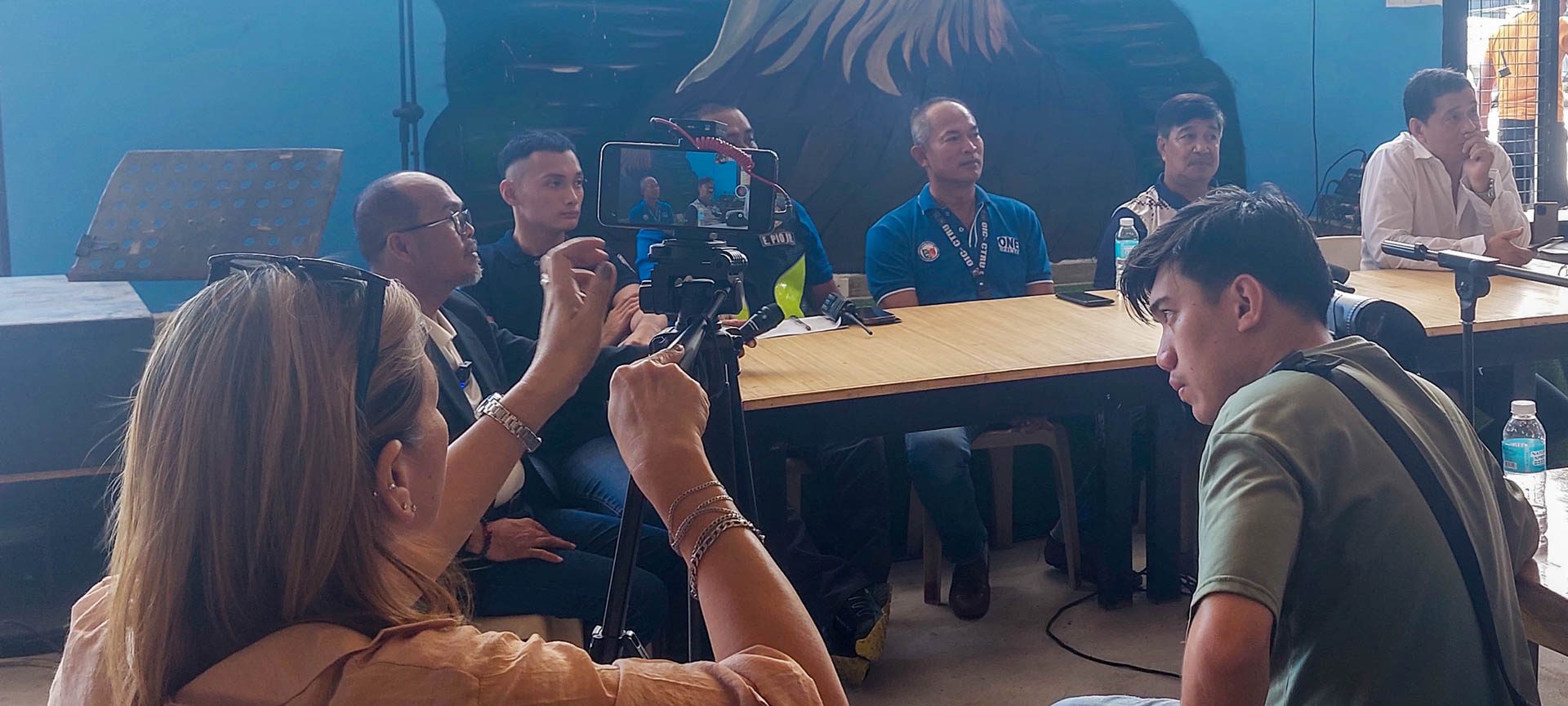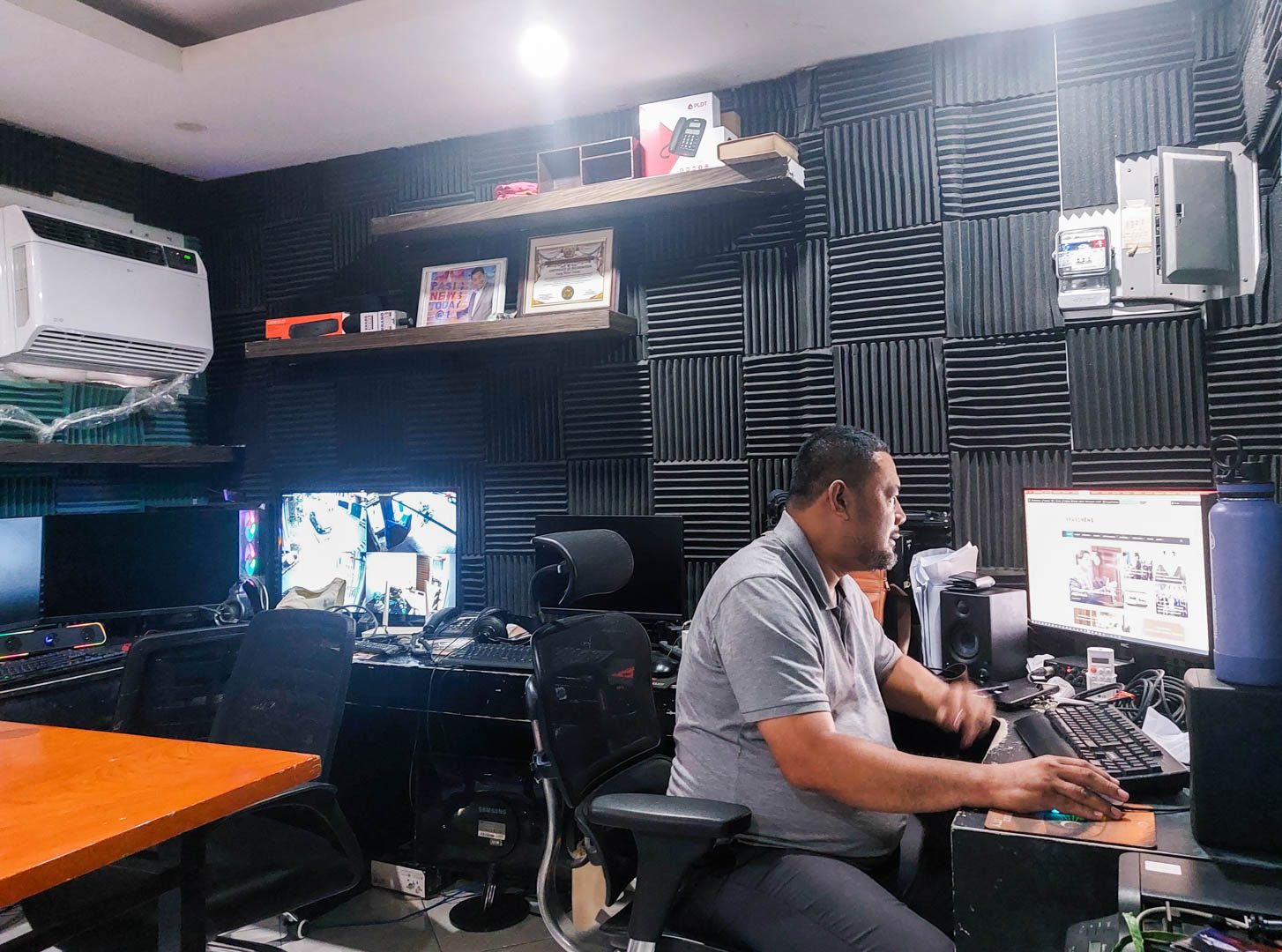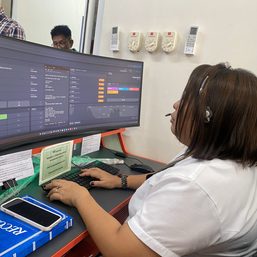SUMMARY
This is AI generated summarization, which may have errors. For context, always refer to the full article.

First of 2 parts
RIZAL, Philippines – It may look like any other press conference: a handful of journalists, armed with smartphones on tripods, covering officials talk about e-bikes in Taytay town.
In fact, up to that point on February 22, it was a rare happening in this urban municipality, or even in this first class province.
The Rizal Media Forum, organized by local reporter Knots Alforte, marked a significant step for the provincial press. For, while Rizal is immediately east of Metro Manila, the local media had struggled to become relevant in covering issues and stories for their communities.
“We’re just close to NCR (National Capital Region), so I figured, why not hold our own media forum?” Alforte told Rappler. He intends to organize such events more regularly. With colleagues and politicians calling him to ask when the next event would be, it gives him hope this could revive the local press.
So reporters like Alforte have embraced Facebook as a news platform to address the need for information of the province’s three million residents.

Yet, even in their departure from traditional media, they find themselves competing with vloggers in their new platform, as well as navigating the rules and fickle algorithms of Facebook.
The challenges to having an active, legitimate community press had been three-fold. These were also found to be common among the provincial press:
- Social media platforms made it easy for any page with an administrator to present themselves as “news” outlets, and therefore provide competition for audience and revenue.
- The business model for very small newsrooms to thrive had been elusive.
- Local officials and other authorities were accessible only for stories with a positive slant.
Virality and survival
Nep Castillo’s BRABO News, a community page with 834,00 followers, focuses on videos and live streams from the ground not just in Taytay, but in nearby towns too.
Crimes became its niche coverage and made its posts go viral. For instance, BRABO News was the first to report a rape-slay case in Taytay before it was eventually “exclusively reported” on the primetime news program 24 Oras.
“That’s the advantage if you’re in the community, you get to shed light on these topics without knowing that it will go viral,” Castillo explained.
But a noble mission and initial virality may not be enough to sustain a newsroom. From a team of 20 media workers covering stories in the field, BRABO News’ crew has dwindled to just eight, mainly because of inconsistent income flow from platforms, Castillo said.
From an almost P1-million monthly income at its peak during the pandemic, the news page now minimally earns P100,000 per month from monetization along with brand advertisements. That is barely enough to sustain operations.
At BRABO News Rizal, another Facebook page created by Castillo, but with a much smaller following of 68,000, only two people are left on standby for breaking news and updates. Revenues can’t keep up with the costs of producing stories, including reporters’ transportation expenses and wages.
“There are lots of news stories out there, but there’s no income in return. We usually get our revenue only from Facebook and YouTube. If we’re at rock bottom, how do we get to pay them (reporters)?” Castillo said.
At the mercy of platforms

With their dependence on monetization features of Facebook and YouTube to fund their operations, community journalists said that recent changes in algorithms led to a sudden drop in engagement and reach. In turn, this threatens their capability to continue working.
Alforte tries to counter the algorithm changes by posting news updates frequently and continuously. He has yet to see if, in the long run, more posts would indeed lead to wider reach, and therefore stable revenue.
John Reczon Calay, TV5 creative content manager and local journalism instructor, said platforms may be limiting the reach of local outfits because of the graphic content they show from the ground, which are flagged for violating platform guidelines.
“[Just reporting them] may be ethical in traditional [media] practice, but in the digital realm, these are flagged by AI as violence. That really limits your distribution,” Calay said. “If we’re solely dependent on platforms [because] they pay well, if their AI catches you off-guard, you’re done.”
According to Castillo, BRABO News’ crime video views used to range from 1,000 to 10,000 a day; now, these won’t even reach 1,000 in two days despite their large following. The resulting meager income flow drove his reporters to more stable jobs in the national media.
Journos out, vloggers in
With properly trained reporters leaving for national outlets in Manila, Taytay Councilor Tobit Cruz observed that the local media is now dominated by “so-called influencers, vloggers.” Based on his experience with them, these vloggers pass themselves off as news reporters but promise only promotional content to local officials in exchange for “tokens.”
“This is not journalism. What’s worrying is that they present themselves as journalists, but in terms of ethics, they’re really not,” Cruz said.
Calay said that, among local news outlets in Rizal, the one that came closest to observing journalism standards was the defunct Angono Rizal News Online (ARNO). It was run by writer Richard Gappi, who died in 2022.
For 12 years, ARNO on Facebook became a vital community publication, where audiences could easily find updates on municipal activities and pressing concerns in Angono, another first class municipality in Rizal like Taytay.
Following ARNO’s closure, various news pages emerged on Facebook in recent years, Alforte’s pages among them.
By mostly posting livestreams and videos, Alforte has amassed Facebook followers from his five news pages, which cover issues in Rizal, the town of Cainta, and Congress:
- Manila East TV – 70,000 followers
- Manila News Republik – 46,000 followers
- Taytay Angono Republik – 5,200 followers
- Rizal Weekly News – 3,600 followers
- Cainta Journal – 2,000 followers
To maintain his and the media’s access to local authorities, and ensure materials for his news posts, Alforte, however, crosses the line between being a journalist and a consultant to politicians on engaging the press.
While Gappi managed ARNO while he was a municipal employee of Angono, Alforte populates his pages with interviews with officials even as he serves as media consultant to Taytay Mayor Allan de Leon and the Nietos of Cainta. He admits some people call him “biased” or “bayaran” (paid hack).
He brushed the criticism aside, insisting he remained independent in his reports.
“I remain focused on covering news. [As consultant], I get back to them (officials) every other day and ask them about issues and relay concerns,” he said. “You need these connections and hard work.”
Would the journalists and vloggers in Rizal agree? (To be concluded) – Rappler.com
NEXT: Part 2 | Hostile officials, fake media dampen revival of community press in Rizal
Lance Arevada is a campus journalist at the Ateneo de Manila University. He is the managing editor of Matanglawin Ateneo, and an Aries Rufo Journalism fellow of Rappler for 2023-2024.
Add a comment
How does this make you feel?













![[OPINION] You don’t always need a journalism degree to be a journalist](https://www.rappler.com/tachyon/2024/06/jed-harme-fellowship-essay-june-19-2024.jpg?resize=257%2C257&crop=287px%2C0px%2C720px%2C720px)




There are no comments yet. Add your comment to start the conversation.